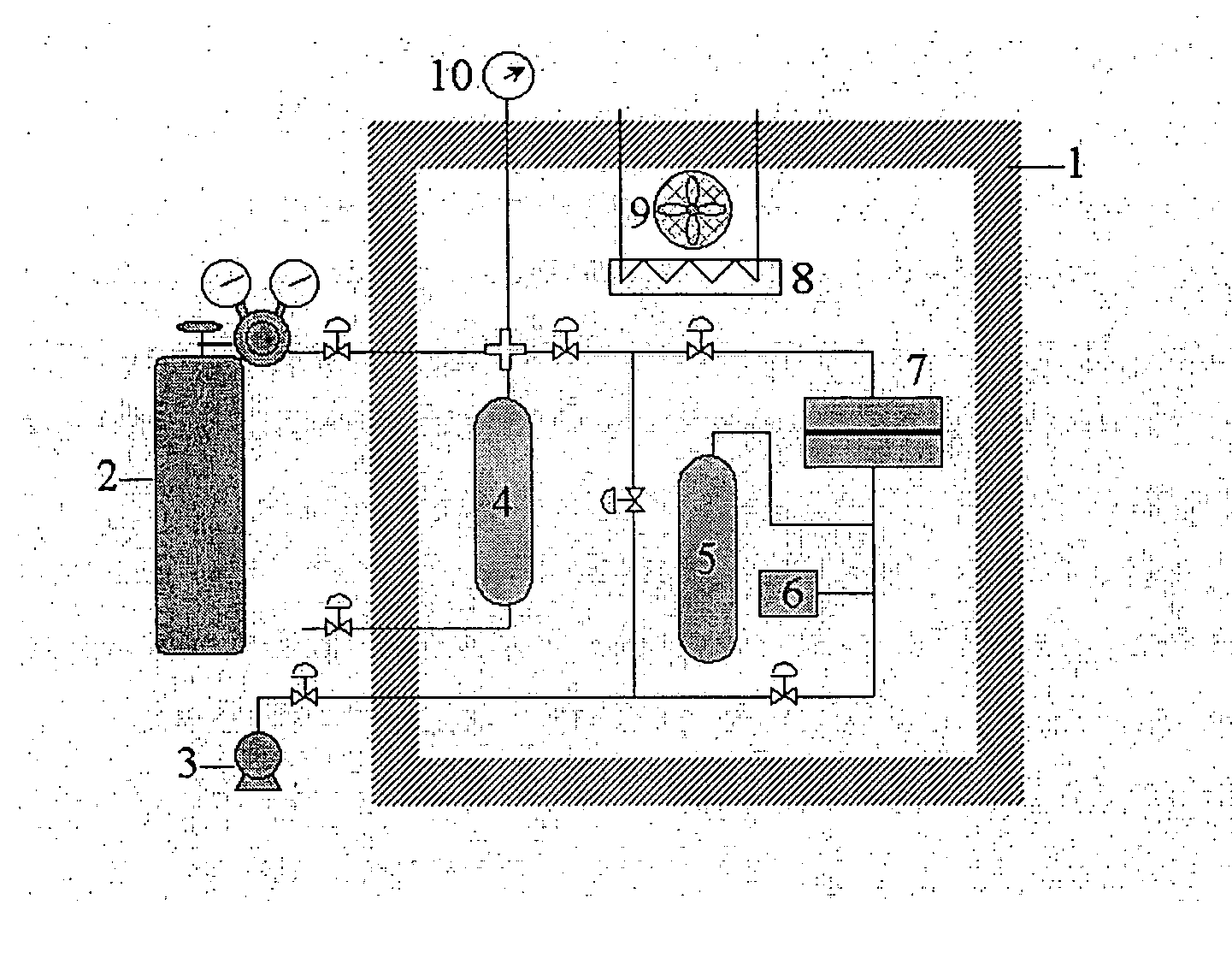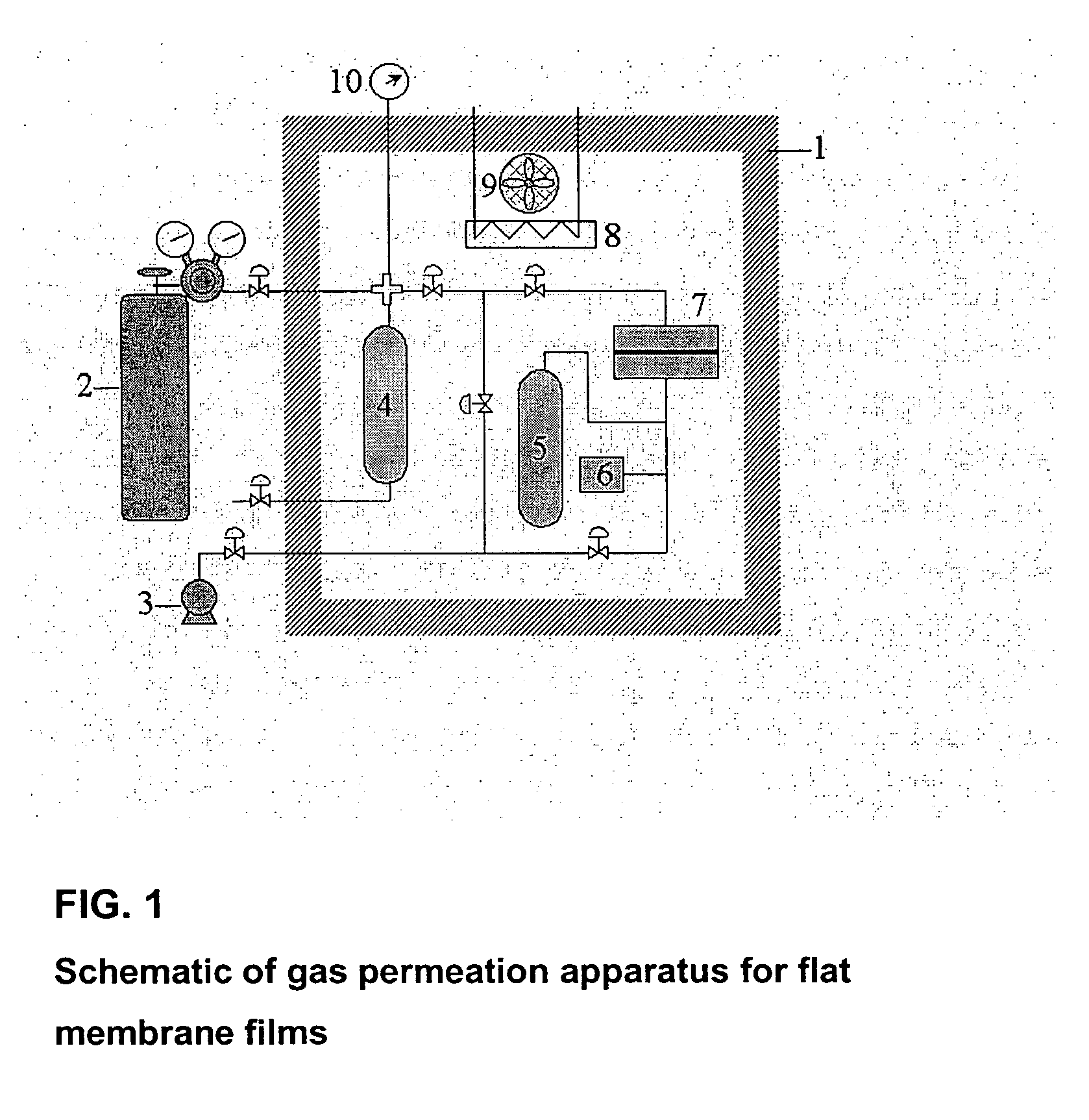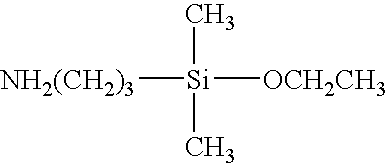Mixed matrix membrane with mesoporous particles and methods for making and using the same
a technology of mesoporous particles and mixed matrix membranes, which is applied in the field of membranes for separating fluids, can solve the problems of temperature-dependent permeability and selectivity, selectivity-productivity trade-off of membranes, etc., and achieves low mesoporosity, enhanced membrane productivity without losing significant selectivity, and low cost
- Summary
- Abstract
- Description
- Claims
- Application Information
AI Technical Summary
Benefits of technology
Problems solved by technology
Method used
Image
Examples
example 1
Synthesis of Mesoporous SSZ-13 Particles
[0070] SSZ-13 particles with high mesoporosity were prepared according to U.S. Pat. No. 4,544,538 using N,N,N-trimethyl-1-adamantammonium cation as the crystallization template or structure directing agent. The silica source was HiSil 233 (PPG) and the alumina source Reheis F-2000. Reagent molar ratios were:
SiO2 / Al2O3 =37OH− / SiO2 =0.38Na+ / SiO2 =0.20Organic / SiO2 = =0.18H2O / SiO2 =17
The crystallization was carried out with stirring at 160° C. for 6 days. The product, after filtering, washing, and calcining had a total pore volume of 0.494 cc STP / g, a micropore volume of 0.295 cc STP / g and a mesopore volume of 0.199 cc STP / g. Micropore analysis was performed according to ASTM D4365-95, and “mesopore volume” is defined as the difference between the total pore volume and the micropore volume.
example 2
Preparation of a Mixed Matrix Membrane
[0072] A mixed matrix membrane was prepared using SSZ-13 zeolite particles as the dispersed phase. Prior to dispersal in polymer, the SSZ-13 zeolite particles were first surface-modified with a silane coupling agent. The silane coupling agent used was 3-aminopropyldimethylethoxysilane (APDMES) and has the following chemical structure:
The silanation procedure was performed as follows. A 200 mL solution was prepared with 95:5 ratio (by volume) of isopropyl alcohol (ACS certified grade) and distilled water. In a separate 500 mL container, 4.0 grams of the silane coupling agent (3-aminopropyldimethylethoxysilane or APDMES) was added to 2 grams of SSZ-13 zeolite. The isopropanol solution prepared in the first step was added to this 500 mL container to form a slurry. The SSZ-13 / APDMES / isopropanol / water slurry was sonicated with an ultrasonic horn (Sonics and Materials) in five minute intervals (5 minutes sonication followed by 5 minutes of resting...
example 3
Preparation of a Mixed Matrix Membrane Using Mesoporous SSZ-13 Particles
[0076] A mixed matrix membrane was prepared with the mesoporous SSZ-13 particles prepared from Example 1. These mesoporous SSZ-13 particles were first silanated with APDMES prior to dispersal into the Ultem® 1000 polymer matrix phase, as described by Example 2. The mixed matrix membrane contained 18 wt. % APDMES-silanated mesoporous SSZ-13 particles within the Ultem® 1000 matrix and was prepared in same manner as Example 2.
PUM
| Property | Measurement | Unit |
|---|---|---|
| distances | aaaaa | aaaaa |
| number average particle size | aaaaa | aaaaa |
| temperature | aaaaa | aaaaa |
Abstract
Description
Claims
Application Information
 Login to View More
Login to View More - R&D
- Intellectual Property
- Life Sciences
- Materials
- Tech Scout
- Unparalleled Data Quality
- Higher Quality Content
- 60% Fewer Hallucinations
Browse by: Latest US Patents, China's latest patents, Technical Efficacy Thesaurus, Application Domain, Technology Topic, Popular Technical Reports.
© 2025 PatSnap. All rights reserved.Legal|Privacy policy|Modern Slavery Act Transparency Statement|Sitemap|About US| Contact US: help@patsnap.com



